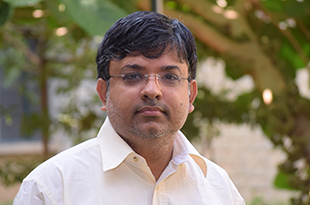'Initiatives and Projects: Decongesting India’s Transportation Networks Using Mobile Devices' - Kanchan Mukherjee and Collaborators from IIT Madras & IMSc

Sponsor: Information Technology Research Academy (ITRA)
Project Team: Kanchan Mukherjee and Collaborators from IIT Madras & IMSc
This proposal envisages the use of mobile phones to estimate congestion and traffic patterns on urban roads. Based on the congestion metrics thus obtained, the proposal aims to develop algorithms and tools for traffic planning and management, using the mobile phone as a service platform.
The proposed solution strategy consists of two distinct focus areas. The first focus area deals with the problem of estimating mobile phone densities to measure prevailing congestion and traffic patterns. The second focus area involves developing algorithms for traffic routing, control and prediction, based on the estimated congestion. The proposed work has enormous potential for applications such as dynamic route planning, peak hour rush control, routing of emergency vehicles to and from disaster affected areas, evacuation planning, and traffic prediction. In addition, this work is expected to shed new conceptual insights into the general problem of control of complex networks with strategic agents, by bringing together ideas from several technical disciplines.
'Initiatives and Projects: Decongesting India’s Transportation Networks Using Mobile Devices' - Kanchan Mukherjee and Collaborators from IIT Madras & IMSc
Sponsor: Information Technology Research Academy (ITRA)
Project Team: Kanchan Mukherjee and Collaborators from IIT Madras & IMSc
This proposal envisages the use of mobile phones to estimate congestion and traffic patterns on urban roads. Based on the congestion metrics thus obtained, the proposal aims to develop algorithms and tools for traffic planning and management, using the mobile phone as a service platform.
The proposed solution strategy consists of two distinct focus areas. The first focus area deals with the problem of estimating mobile phone densities to measure prevailing congestion and traffic patterns. The second focus area involves developing algorithms for traffic routing, control and prediction, based on the estimated congestion. The proposed work has enormous potential for applications such as dynamic route planning, peak hour rush control, routing of emergency vehicles to and from disaster affected areas, evacuation planning, and traffic prediction. In addition, this work is expected to shed new conceptual insights into the general problem of control of complex networks with strategic agents, by bringing together ideas from several technical disciplines.
